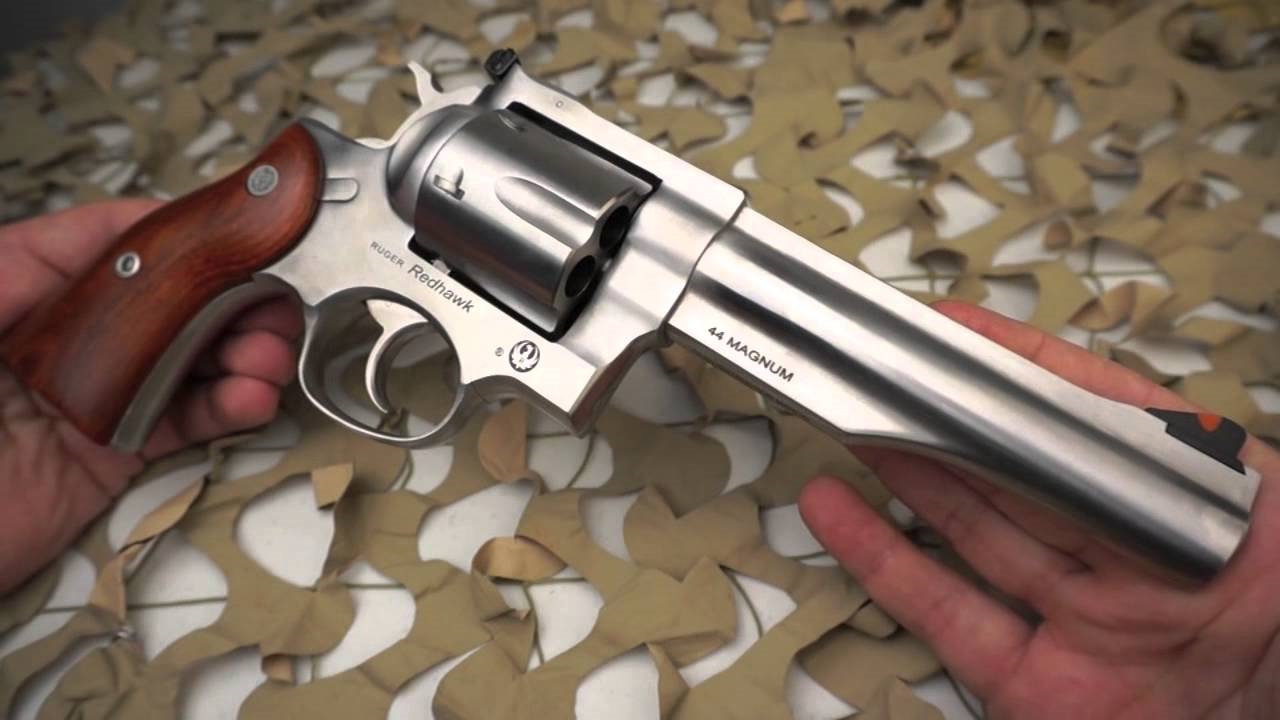The Ruger Redhawk .44 Magnum deserves the honor of being “the Timex of double-action revolvers; you know, ‘Takes A Licking And Keeps On Ticking.’” Though I also designated the Ruger GP-100 .357 Magnum with the same title in my review. That same slogan is every bit as appropriate for Ruger’s best-known big-bore double-action revolver entry. If anything, the Timex analogy is even more apropos for the Redhawk than it is for the GP-100, since the former gun is both more powerful and an older patent (1979 vs. 1985) than the latter.
(Subscribe to Our YouTube Channel Here. Check out More 19FortyFive Videos Here)
Let’s take a longer look at the Ruger .44 Magnum which isn’t as famous as Dirty Harry’s Smith & Wesson (S&W) Model 29, but still has a long-established reputation for excellence in its own right.
Rise of the Really Rugged Ruger Redhawk
The Redhawk is just one of the firearms in a long line of successful products from Sturm, Ruger & Co, which is headquartered in Southport, Connecticut, and was founded in 1949 by the late great William Batterman “Bill” Ruger Sr. (1916 – 2002) and Alexander McCormick “Alex” Sturm (1923 – 1951). From the get-go, Mr. Ruger designed the Redhawks to be built like tanks. Just like with the medium-bore GP-100 that followed her, the big-bore Redhawk will keep on plugging away after being subjected to loads that would literally blow up a Smith or a Colt wheelgun. When you see reloading manuals with sections that state “For Ruger Guns Only,” that oughta tell you something.
What makes the Ruger so much stronger than its competitors? For one thing, its cylinder is longer than most of its competitors, which allows ammunition to be loaded to a longer overall length. Then there is the manufacturing process of investment casting. As explained by Bill “Tank” Hoover in his dedication to Bill Ruger written for American Handgunner Magazine:
“Bill Ruger was a manufacturing genius! He brought back the centuries old methods of investment casting for his guns. This method uses wax duplicate parts that are sprayed with ceramic. The ceramic is heated up and wax removed. Molten steel poured into the connected ceramic tree molds. When the steel cools, the ceramic is broken off the steel parts.
Little machining is needed to finish the parts and steel waste a minimum. It’s a quick and efficient way of making strong steel parts.”
Snubbed by Dirty Harry, Snagged by 007
With the Redhawk having debuted 24 years after the S&W M29 and eight years after the original Dirty Harry movie — with two sequels released in the interim; Magnum Force in 1973 and The Enforcer in 1976 — perhaps it’s not surprising that ol’ Inspector Harry Callahan never bothered packing one to supplement his beloved Smith, even though two more films in the Dirty Harry film franchise were made subsequent to the Ruger’s release. But the Ruger hand cannon did see usage in the hands of another iconic hero of action-adventure fiction: Bond, James Bond.
Not in the film series, mind you, wherein Agent 007 stuck with his famous .32 caliber Walther PPK. But for the book series, when bestselling author and former Royal Marine officer John Gardner (1926-2007) picked up the mantle from Bond’s creator, Ian Fleming (1908-1964) in the 1980s, among the things that Mr. Gardner decided to do was to upgrade 007s armament with a variety of different firearms. (WARNING: SPOILER ALERT) Among these then-new Bond guns were indeed the Redhawk, which “The World’s Most Famous Secret Agent” uses in Icebreaker — Gardner’s third novel in the series, published in 1983 — to blow away the story’s main villain.
Personal Shooting Impressions
The Ruger Redhawk definitely holds some sentimental value for me; though it wasn’t the first .44 caliber revolver I ever fired, it was the platform for my first-ever experience shooting full-house .44 Magnum loads, that being back at the tender age of 15 in October 1990 at The Target Range in Van Nuys, California. Suffice to say that it left a lasting positive impression on my younger self.
Fast-forward to August 2019. I purchased my used Redhawk as a 44th birthday present — how thematic, eh — from the Vienna Arsenal in Vienna, Virginia (roughly 16 miles from Washington, D.C.), a gun shop that has repeatedly impressed me with its selections of used guns, especially of the historic, hard-to-find and curio and relic kind (not that the Redhawk falls under the C&R designation, mind you, but still). I’ve put roughly 750 rounds through it since then; I would’ve gladly fired even more, but the ammo for it — in Magnum and Special loads alike — is so gosh darn expensive.
Mine is a stainless steel specimen with a 7.5-inch barrel. The previous owner, for reasons entirely unbeknownst to me, decided to replace the factory original sight blade with a bead-style front sight. Even at short distances, it causes the gun to shoot way high; wondering if that’s just me, I let a new shooting buddy fire a few rounds through the gun, and he experienced the same handicap. Suffice to say that when time and funds become available, I’m going to take this revolver to my local gunsmith to install a retrofit to a more traditional front sight.
For the purposes of this range review, I took the gun to the fine Cindy’s Hot Shots indoor range facility in Glen Burnie, Maryland. Due to time and budget constraints — thanks to a long waitlist at the range, which left me 45 minutes to test-fire three different guns before closing time — I was only able to use 45 rounds for this particular live-fire session. I would’ve gone a full 50 rounds, but I generously let one of the range employees – the aforementioned new shooting buddy – test-fire the remaining five rounds in the box. The ammo used was Fiocchi 240-grain semi-jacketed soft point (SJSP).
The session was divvied into 15 rounds apiece at 21 feet, 50 feet, and 75 feet. Headshots were sought at the near and far distances, whilst center torso shots were targeted at the middle distance, using an USPSA-style target made by Baker Targets of Orlando, Florida.
As mentioned before, the aftermarket bead sight caused me – as well as my new buddy – to fire higher than expected, so at all three distances, I had to take some significant “Kentucky windage;” at 50 feet, I had to hold 6 inches low, and at 75 feet I had to hold on the center of the torso to have a chance a hitting the head!
In spite of that, the old girl, er, gun, showed that she could still do her part if I did mine. For the umpteenth time, I needed to remind myself to go back to my optometrist’s office and upgrade my 2019 vintage eyeglasses RX. At 21 feet, all 15 rounds hit the head, with four straying from the “A” into the “B” zone. At 50 feet, 14 out of 15 stayed in the center torso’s “A” zone, with one measly proverbial black sheep straying from the block high right into the “C” zone – my fault, not the gun’s, for overcompensating on my Kentucky windage. At 75 feet, my results were pretty “Meh,’ with only six rounds striking the B-zone of the head and the remainder hitting the paper but outside of any scoring zones; however, even then, the rounds were nicely centered, which showed that the revolver still had some seriously long-distance dialing (so to speak) potential once I replaced both that crappy front sight and my prescription lenses!
Pros
That Ruger ruggedness that I’ve already touched upon over and over again, and flawless reliability to go with it. The heavy stainless steel construction helps tamp down the recoil of full-house Magnum loads, especially when combined with rubber grips. Reasonably smooth double-action trigger and a crisp single-action trigger. Wonderfully accurate.
Another advantage of Ruger double-action revolvers is that the cylinder release is a push-button style, as opposed to the push-forward latch on the Smiths, and the pull-back latch on the Colts. In my professional opinion, this is the most ergonomic way to go about it.
Whilst disassembly of a revolver is normally not recommended for anybody other than a trained and competent gunsmith, from what I’ve read the Ruger revolvers are, comparatively speaking, easier to take apart and put back together than their Colt and Smith competitors.
As with any .44 Magnum revolver, the Redhawk will also safely and accurately chamber and fire the less powerful — but still plenty effective for anti-personnel use — ancestral calibers, the .44 Special and the .44 Russian — please no “collusion” jokes about the latter round, folks!
Cons
As is typically the case, the Ruger triggers aren’t as smooth as competing double-action revolvers such as those from S&W. At least one gun writer, Russ Chastain of AllOutdoor, even goes so far as to say that “The Redhawk’s single action trigger pull is one of the worst-ever, and like other Ruger double action revolvers the double action pull is inconsistent and heavy.”
With all due respect to Russ, methinks he’s grossly exaggerating, but eh, to paraphrase the late great Norm Macdonald as the even later and greater Burt Reynolds, “Yeah, well, that’s [his] opinion.” That said, Ruger wheelgun triggers don’t lend themselves as well to tuning as the Smith wheelies.
Also, as previously indicated, the Redhawks are heavy. Though that’s great from a durability and recoil-absorption standpoint, that weight can take its toll on your lower back or shoulder when you lug it around either in a range bag or a holster for an extended period of time.
More: Is Donald Trump Going Crazy?
More: Could Mike Pence Beat Donald Trump in 2024?
More: NATO vs. Russia – What World War III Would Look Like
Yea or Nay? The Verdict
Bottom line, those minor flaws aside, I definitely recommend the Ruger Redhawk, whether for big-bore paper-punching fun, hunting (I myself don’t hunt, but the .44 Magnum definitely comes in handy for deer and wild boar alike), self-defense (with the lighter .44 Special loads), or competition.
Bonus Photo Essay: Meet the Glock 19X
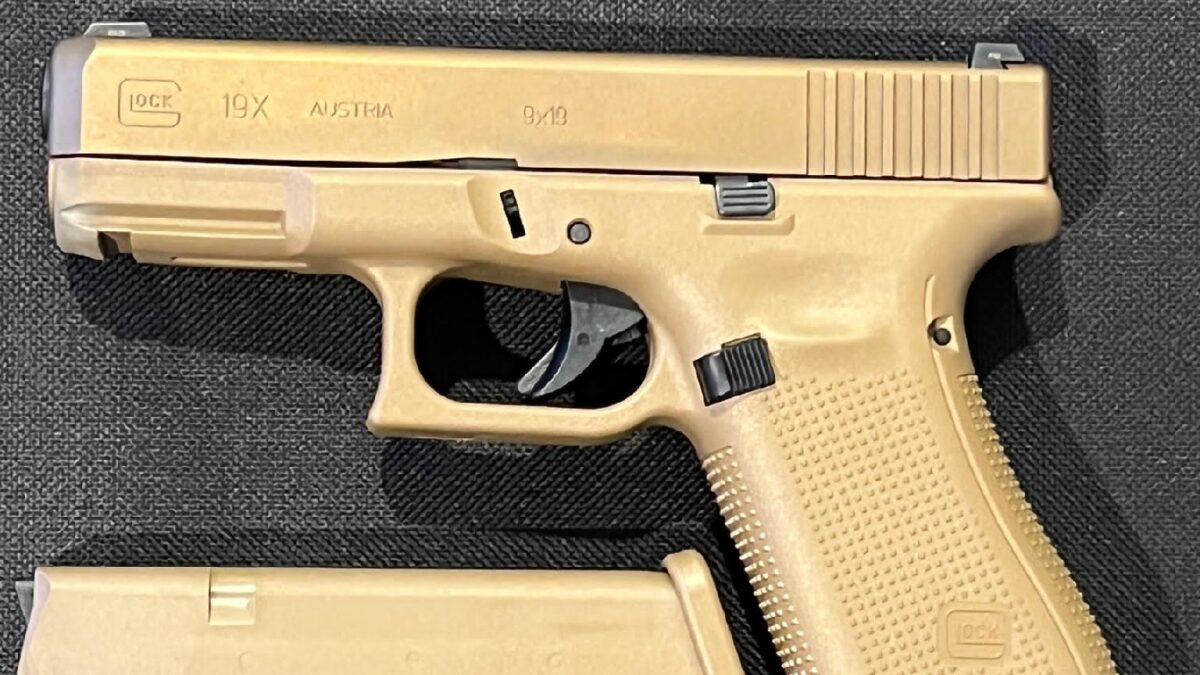
Glock 19X. Image Credit: 19FortyFive.
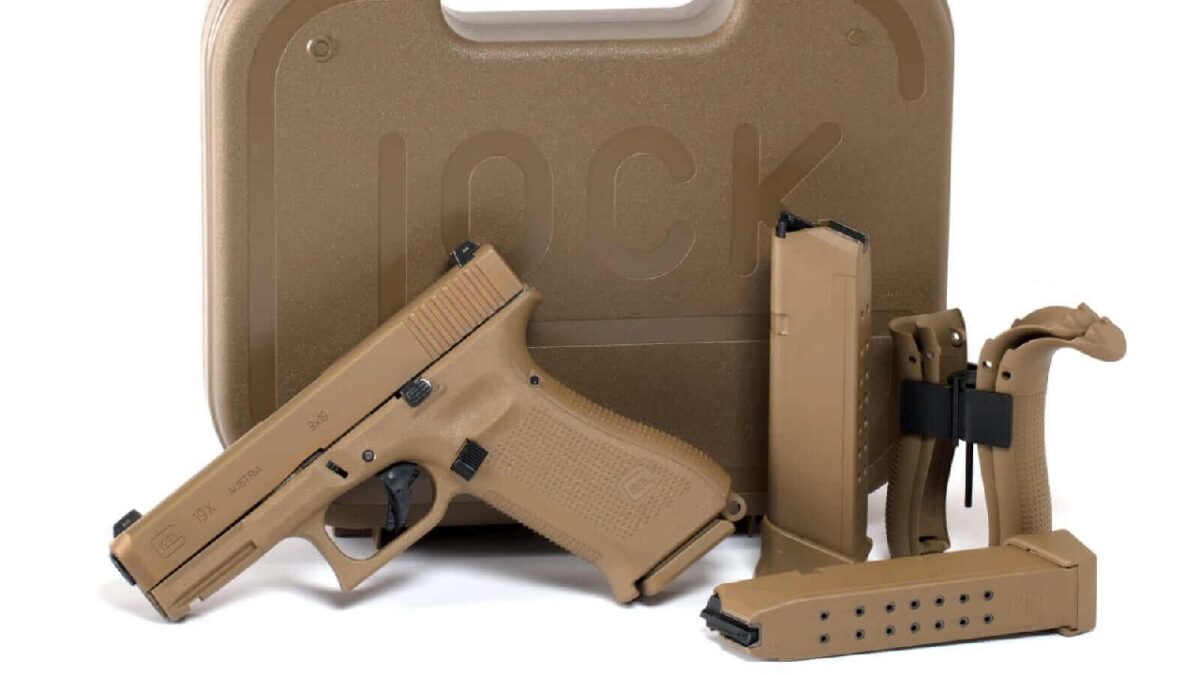
Glock 19X marketing package. Image Credit: Glock.
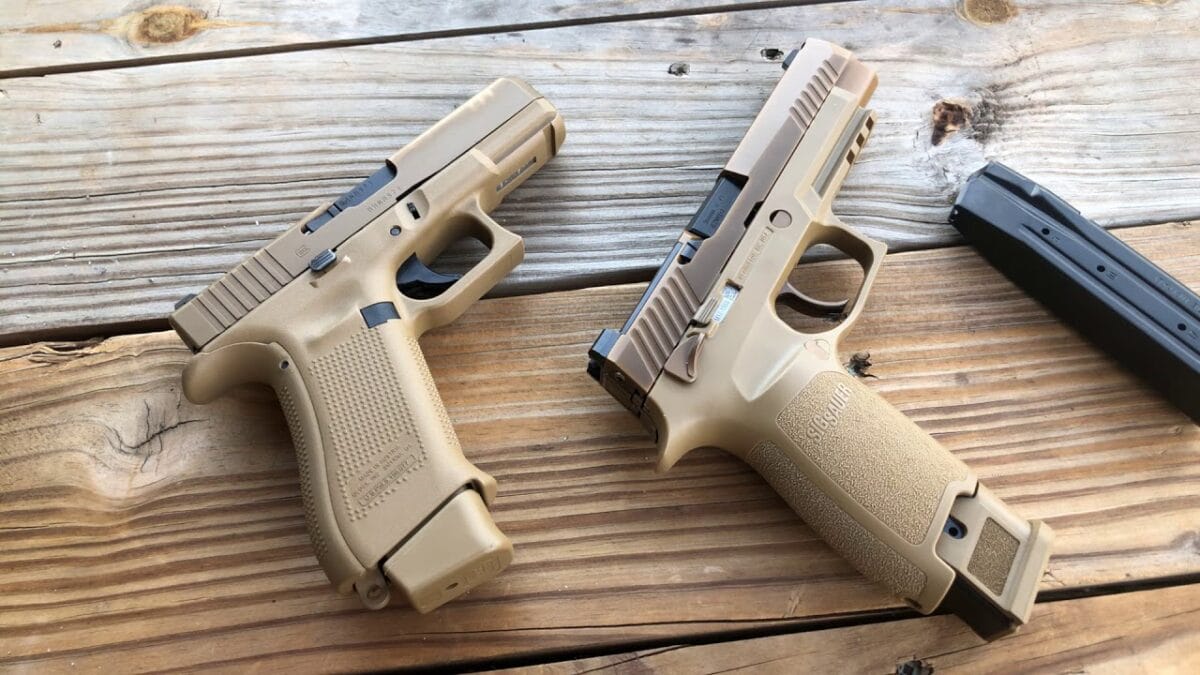
Glock 19X. Image Credit: YouTube Screenshot.
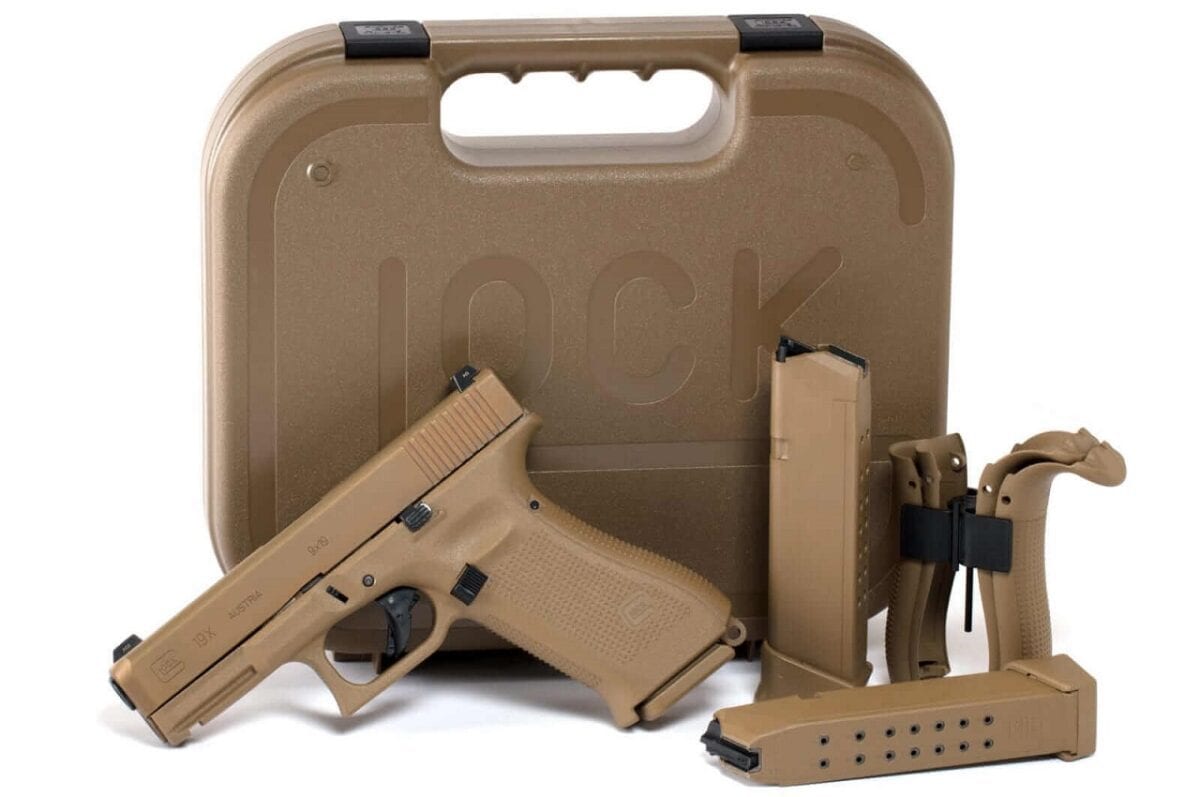
Glock 19X. Image Credit: Glock.
Christian D. Orr has 33 years of shooting experience, starting at the tender age of 14. His marksmanship accomplishments include: the Air Force Small Arms Ribbon w/one device (for M16A2 rifle and M9 pistol); Pistol Expert Ratings from U.S. Customs & Border Protection (CBP), Immigration & Customs Enforcement (ICE), and the Federal Law Enforcement Training Center (FLETC) Criminal Investigator Training Program (CITP); multiple medals and trophies via the Glock Sport Shooting Foundation (GSSF) and the Nevada Police & Fires Games (NPAF). Chris has been an NRA Certified Basic Pistol Instructor since 2011.

